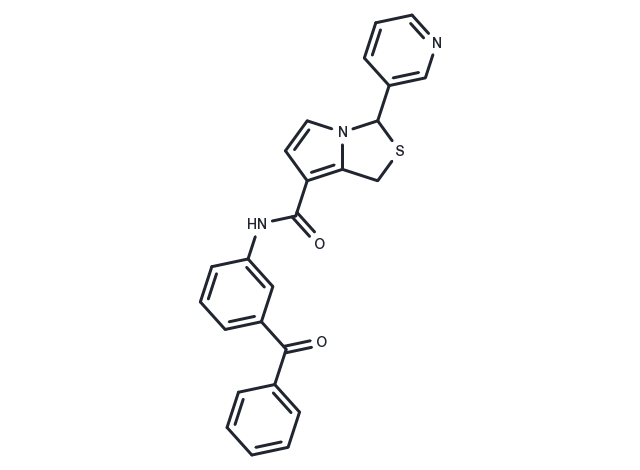store at low temperature
Powder: -20°C for 3 years | In solvent: -80°C for 1 year

Tulopafant (RP 59227) is a potent platelet-activating factor (PAF) antagonist that increases capillary patency and prolongs allograft heart survival.

| Pack Size | Availability | Price/USD | Quantity |
|---|---|---|---|
| 1 mg | In stock | $ 700.00 | |
| 5 mg | In stock | $ 1,800.00 |

| Description | Tulopafant (RP 59227) is a potent platelet-activating factor (PAF) antagonist that increases capillary patency and prolongs allograft heart survival. |
| In vitro | Preincubation of neutrophils with Tulopafant (RP 59227) leads to a concentration-dependent reduction in chemiluminescence emitted by PAF-primed cells[2]. |
| In vivo | Tulopafant (RP 59227) effectively reduces myocardial infarct size and decreases the incidence of ischemia and reperfusion-induced arrhythmias in barbital-anesthetized dogs[1]. Histological examination reveals a marked reduction in both interstitial hemorrhage and the deposition of platelets and granulocytes in capillaries of cardiac xenografts when recipient animals are pretreated with Tulopafant[1]. |
| Synonyms | RP 59227 |
| Molecular Weight | 425.5 |
| Formula | C25H19N3O2S |
| CAS No. | 116289-53-3 |
store at low temperature
Powder: -20°C for 3 years | In solvent: -80°C for 1 year
You can also refer to dose conversion for different animals. More
bottom
Please see Inhibitor Handling Instructions for more frequently ask questions. Topics include: how to prepare stock solutions, how to store products, and cautions on cell-based assays & animal experiments, etc.
Tulopafant 116289-53-3 GPCR/G Protein PAFR RP 59227 RP59227 RP-59227 inhibitor inhibit
